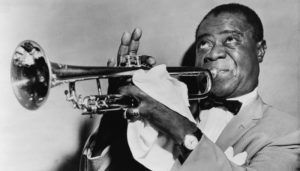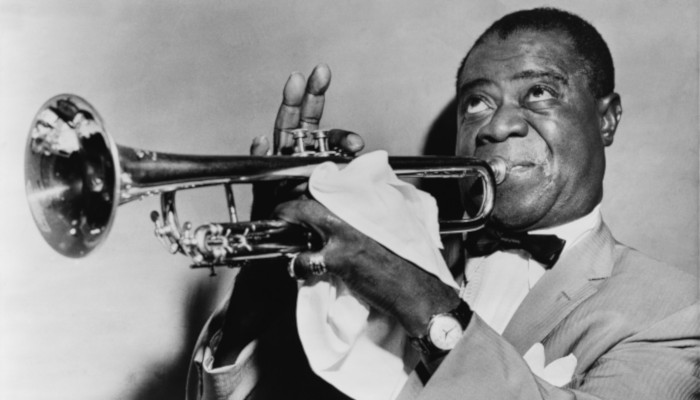
There are a wide variety of wind instruments available to current and aspiring musicians today. Some have a low upfront cost and make great starter instruments.
Others require a bigger commitment but offer a lifetime of enjoyment to those musicians willing to invest the time and money. And you may start out playing one instrument and then later choose to learn others.
I started playing wind instruments when I was 10 years old. After a few years playing in my school band, I decided to switch to bass clarinet. I continued to play the bass clarinet throughout my school years and in college.
Today I continue playing the clarinet and double on the saxophone. I’ve also taken lessons on the euphonium, flute and tuba. I currently play the bass clarinet in my local community band.
Learning a wind instrument doesn’t have to be intimidating. There are
several excellent choices for people who don’t have a lot of time to put into
learning their instrument.
Here I’ll explore 10 popular wind instruments, in roughly descending order of
popularity, and detail which ones are great for beginning players.
1. Saxophone
The saxophone tops this list as possibly the most popular wind instrument being played today among young students and adults alike. And it’s a great choice for beginning players.
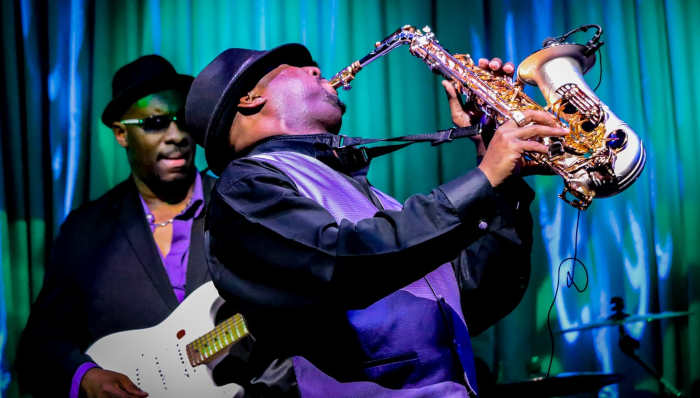
Saxophones are best known in jazz bands. So it comes as no surprise that two of the best-known saxophonists, Charlie Parker and John Coltrane, were jazz players. But saxophones are also played in big bands and concert bands. Rock bands also use them. Saxophones occasionally have parts in an orchestra.
How hard is it to learn saxophone?
The saxophone is relatively easy to learn. It’s easier to play than the flute, clarinet, oboe and bassoon.
The fingerings are simple to understand and getting a sound out of the instrument is not hard. But developing a mature sound does take some time.
Once you learn to read music, you can learn the basic fingerings in about six months. Expect to play for at least four to eight years before mastering the instrument.
What’s the typical price range for a saxophone?
You’ll find there are a few tiers of saxophone with varying price and quality meant for different types of players:
- $100 – $200 for a low-end student model
- $1,500 for a good-quality student alto sax
- $3,000 – $4,000 for a professional instrument
2. Clarinet
The clarinet is a very popular school instrument with many adult players as well. While there are many different types of clarinets, here I’m talking mainly about the most popular among them, the B♭ clarinet.
It’s a good choice for someone who wants multiple options for ensemble playing. Clarinets are also equally good for band and orchestra, and there’s a lot of solo literature, music featuring a solo clarinetist.

Clarinets have an impressive range, from orchestral music to band music. They’re also used in jazz and Dixieland bands. Some of the most famous clarinetists include Benny Goodman, Martin Fröst and Sabine Meyer.
How hard is it to learn clarinet?
The clarinet has slightly harder fingerings than the saxophone and the sound is more difficult to master. Many young clarinetists have a “squeaky” sound.
If you’re new to clarinet, you’ll need to develop your embouchure, or the way the lips and mouth are held while playing. You should be able to play at a basic level in about three to six months. Fully mastering the clarinet may take five to eight years.
What’s the typical price range for a clarinet?
Clarinets are typically priced in one of three different broad categories:
- $100 – $200 for a low-end student model
- $300 – $500 for a good-quality student instrument
- $1,000 – $2,000 for a professional instrument
3. Flute
The flute is an extremely popular wind instrument among young players and adults. Many young band students take up the flute. And there are always many opportunities for flutists to join an ensemble.
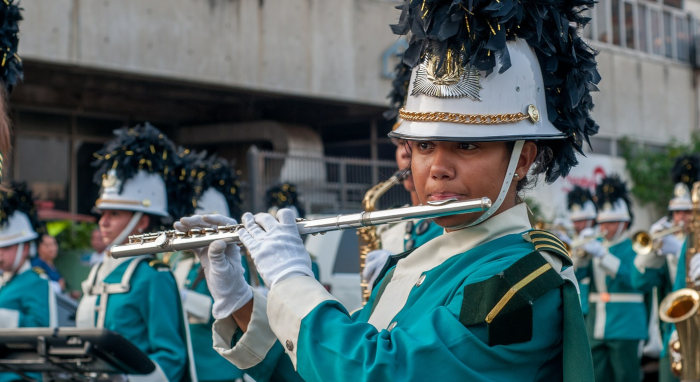
Their amazing versatility is one reason for their popularity— flutes have parts in orchestras, bands and chamber groups. Some of the best-known flutists include Jean-Pierre Rampal, Matt Molloy and Gareth Davies.
How hard is it to learn flute?
While the initial steps of learning to play can be challenging, the flute is about the same level of difficulty as the clarinet and saxophone.
Just getting a making a sound on the flute can be difficult without some instruction. But once you learn the trick, flute is not a difficult instrument to play. The fingerings are very similar to those on the saxophone. And any prior experience with one will make it easier to learn the other.
It takes six months to learn the fingerings and can take six to eight years to master.
What’s the typical price range for a flute?
Flutes are typically priced in one of three categories:
- $50 – $100 for a low-end student model
- $200 – $300 for a good-quality student instrument
- $500 – $2,500 for a professional instrument
4. Trumpet
The trumpet is very popular with all ages. The B♭, the most common of the trumpet types, is the first brass instrument that many young players learn. Trumpets are popular in jazz and rock genres and in orchestras and concert bands. They’re also featured in drum and bugle corps as well as brass choirs and quartets.
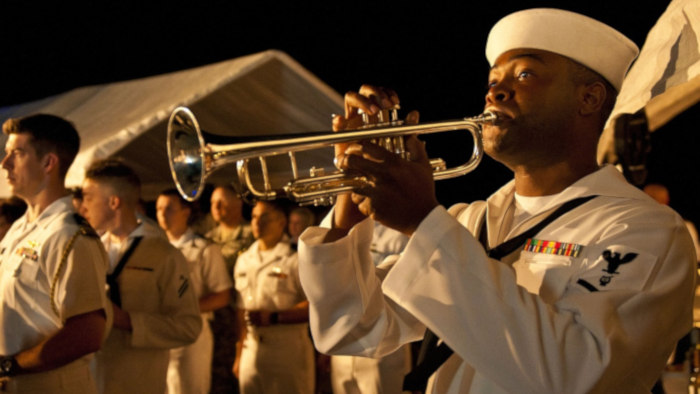
Dizzy Gillespie, Miles Davis and Wynton Marsalis are some of the best-known trumpeters.
How hard is it to learn trumpet?
Like the flute, getting a sound out of a brass instrument can be tricky at first. Developing the proper trumpet embouchure is especially challenging for new players. You may need a few formal lessons or a quick playing session with support from an experienced player.
Once you learn how to produce a sound, you’ll need to develop the lip strength and breath control to make a quality tone. This can take a few years. The trumpet takes at least six to eight years to master.
What’s the typical price range for a trumpet?
The following represent common price ranges for different trumpets:
- $50 – $100 for a low-end student model
- $200 – $300 for a good-quality student instrument
- $2,500 – $5,000 for a professional instrument
Related: Trumpet: 17 Frequently Asked Questions.
5. Harmonica
The harmonica is somewhat popular, especially among casual musicians, and is a lot of fun to play in casual settings. You can play it at home for fun, or you can play it with your friends in a band.
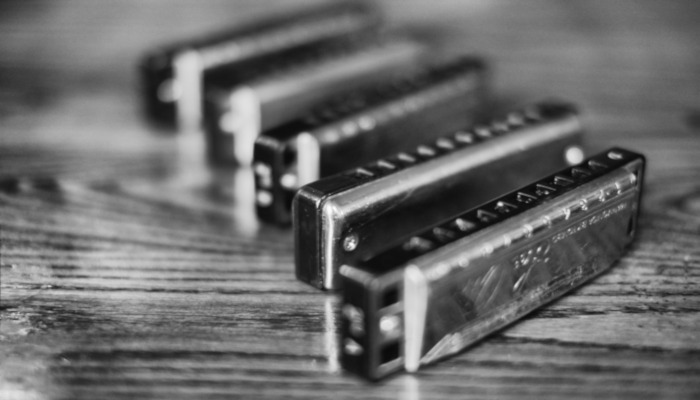
You’ll find harmonica featured mostly in folk, rock, blues, traditional and country music. Some of the best-known harmonica players are Alan Wilson, Little Walter and John Popper.
If you want to play with a blues band, buy a set of harmonicas in different keys so you can play along with any song.
How hard is it to learn harmonica?
It is very easy for a beginner to get started with the harmonica. As with all instruments, there is a learning curve depending on what kind of music you want to play. And the quality of your playing will depend on the time you put into it. But anyone can play basic harmonica in less than an hour.
What’s the typical price range for a harmonica?
New harmonicas typically sell for $5 to $50 for a basic model and $100 to $250 and up for a professional model (related: Harmonica: Frequently Asked Questions).
6. Trombone
The trombone is popular among young band students and solo players, as well as jazz and big band players. It’s a fun instrument that’s very rewarding to play.
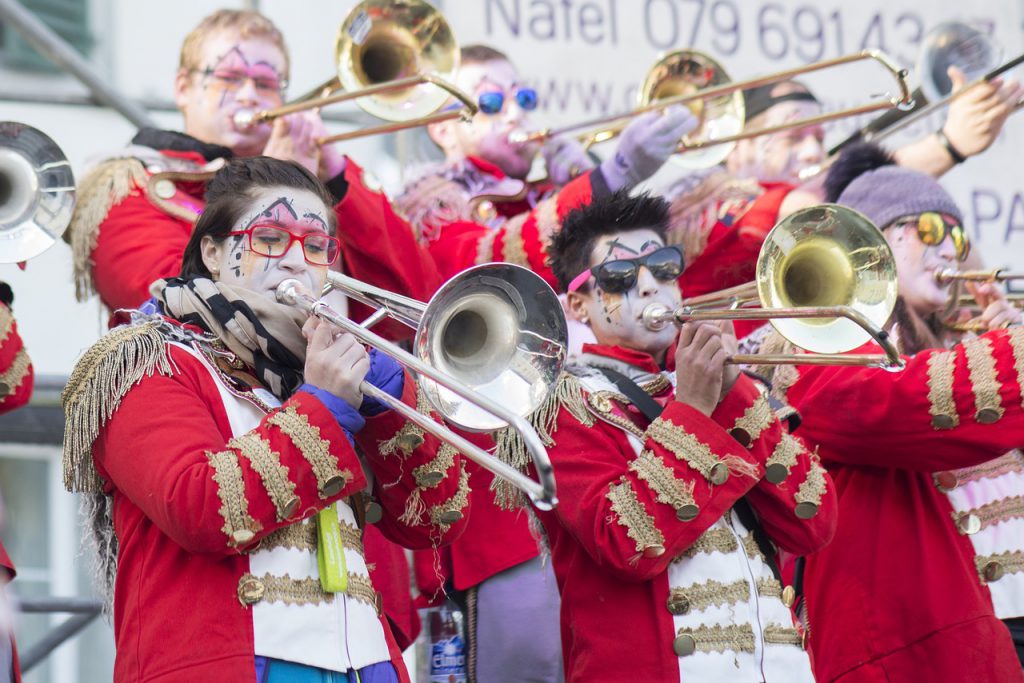
The trombone is an excellent instrument for band, orchestra, jazz, blues and solo playing. It’s also an important part of the brass choir or quartet. Tommy Dorsey, J.J. Johnson and Urbie Green are some of the most famous trombonists.
How hard is it to learn trombone?
The tricky thing about the trombone is that there are no set stops for the slide, so you need to remember exactly where the slide should go in order to play the right notes.
You need good airflow and lip strength to make an attractive sound. And playing the trombone requires learning to read music in bass clef. These will develop over time.
As a beginner trombonist, you may need a few lessons before you can begin to learn on your own since there are no set stops. It may take up to five years to master playing the trombone.
What’s the typical price range for a trombone?
Trombones typically fall into one of three price ranges:
- $150 – $250 for an entry-level model
- $350 – $500 and up for a good-quality student instrument
- $3,000 – $5,000 for a professional model
Related: Trombone: 18 Frequently Asked Questions
7. Recorder
The recorder is a great starter instrument for a first-time musician and is especially popular with children and young players. Many children are taught the recorder in school to learn how to read music and play in a group.
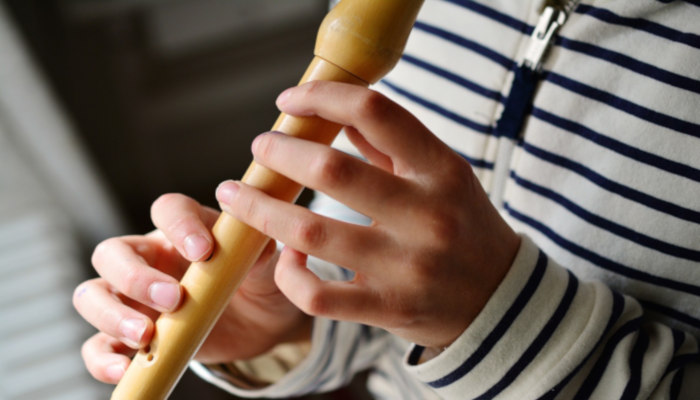
The recorder is very easy to pick up, so it is a good choice for people who don’t have much time to practice an instrument.
There are many recorder songbooks available at music stores with music that has been transcribed from pop and classical sources. In the classical genre, the recorder is best known for medieval and Renaissance music.
Some of the best-known recorder players include Rachel Begley, Edgar Hunt and The Amsterdam Loeki Stardust Quartet.
How hard is it to learn recorder?
The nice thing about the recorder is that anyone can make a good sound with very little effort. Blowing into a recorder is easy. And the fingerings are simple to master.
What’s the typical price range for a recorder?
Recorders range in price from $3 – $10 for an entry-level plastic model to $200 – $1,000 for a professional wooden model.
8. Oboe
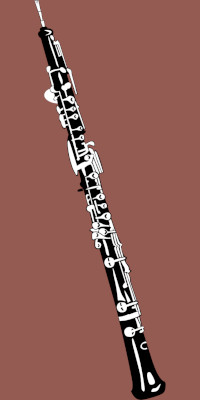
The oboe is popular with band and orchestra musicians and less popular as an introductory band instrument.
The oboe is difficult to learn but rewarding. And great experiences await anyone willing to put in the time and effort to learn the oboe. Oboe players are in demand because it is such a tricky instrument to master.
There are many beautiful parts for the oboe in concert band and orchestra music. There are also many lovely solo pieces. Some well-known oboists include Eugene Izotov, Albrecht Mayer and Elaine Douvas.
How hard is it to learn oboe?
The oboe is a challenging instrument. Getting a sound out of a double reed instrument takes practice and a few lessons. The fingerings are totally different from the flute, saxophone and clarinet, making the oboe extra challenging.
Many young players find it hard to create a good sound from the oboe. And I’d recommend getting some lessons if you want to learn to play. Expect to need up to a year of practice to play oboe at a basic level and five or ten years to master.
What’s the typical price range for an oboe?
There are a few price ranges for different types of oboes:
- $400 – $500 for a less-expensive student model
- $1,200 – $2,500 for an intermediate student model
- $7,000 – $12,000 for a professional model
9. Tuba
All low brass instruments are popular in schools and colleges. But every good band or orchestra needs at least one tuba. And the tuba is an essential part of the band and orchestra world.
However, the tuba is an expensive instrument. And the high price keeps most people from buying a tuba to play just for fun. In fact, in some cases you can buy a cheaper used car.
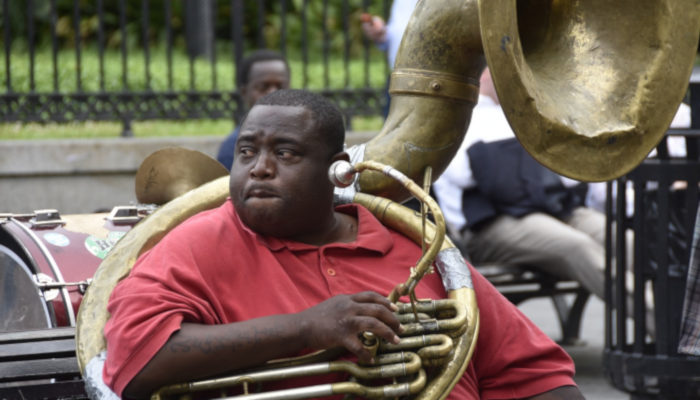
That’s why most young players and students borrow their tubas from their school’s music department. If you don’t have the money to spend on a tuba, consider buying a smaller member of the tuba family like a euphonium or baritone.
Tubas appear in many brass quartets and ensembles. Øystein Baadsvik, Roger Bobo and Carol Jantsch are some of the best-known tubists.
How hard is it to learn tuba?
The tuba has the same fingerings as the trumpet, making it easier to learn to switch between the two. And like the trombone, the tuba requires players to learn bass clef.
The tuba requires a lot of air flow and lip strength. Smaller players may struggle with the tuba until they have developed their breath control.
It does not take long to play the tuba at a basic level, maybe six months to a year, and it can take four to eight years to master.
What’s the typical price range for a tuba?
The tuba is a relatively expensive instrument. A basic student model will run you $1,500 and up. And a professional model typically costs $3,000 – $15,000.
10. Bassoon
The bassoon is an important instrument in the band and orchestra. There are usually only one or two bassoonists in a group. And bassoon is not the most popular woodwind instrument among student players because it’s challenging to learn and expensive to own.
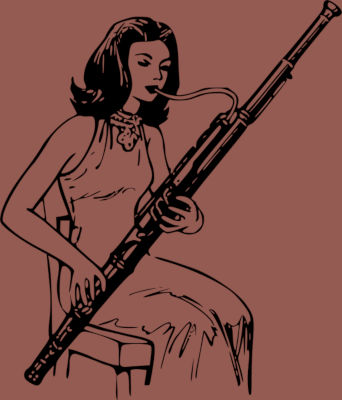
Most entry-level players will want to rent an instrument for a few years before they decide to purchase one. The bassoon is a delicate instrument and people must be careful to make sure the wood and the keys are kept in good condition.
The bassoon has a great deal of variety in its sound and in the styles of music that can be played. It’s generally a band and orchestral instrument. Use in other styles of music is rare. Some of the best-known bassoonists are Albrecht Holder, Klaus Thunemann and Milan Turkovic.
How hard is it to learn bassoon?
The bassoon is a relatively difficult instrument. But
it’s easier to learn than the oboe because the larger reed makes it easier to
produce an acceptable sound. The fingerings are the same as the oboe with some
additional keys. Music for the bassoon is written in bass clef.
A lesson from a friend or a teacher is necessary to get started on the bassoon.
It takes about a year to master the fingerings and five to eight years to
master the instrument.
What’s the typical price range for a bassoon?
The bassoon is the most expensive wind instrument on this list by far. Expect to pay $1,800 or more for a basic student model and $5,000 – $27,000 for a professional model.
Conclusion
Wind instruments are rewarding and fun to play. When you learn to play a wind instrument, you’ll be able to play on your own or in a group. Choosing a wind instrument to play takes some thought. Some factors you might want to consider are:
- Price
- How easy the instrument is to learn
- Places you can play, like a band or orchestra
- What genres of music you’d like to play and how accommodating the instrument is to those genres
Some instruments, like the recorder and harmonica, are easier for inexperienced players to pick up. So these can be great starter instruments to try out before moving to something more difficult, like the oboe or bassoon.
As with any instrument, you’ll need to put in the work to improve if you want to achieve a high standard of playing. Either of these ten instruments can give you a rewarding experience if you’re willing to take the time to learn.
